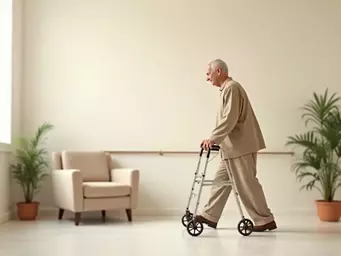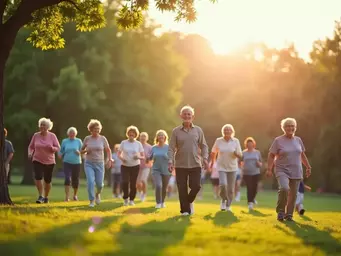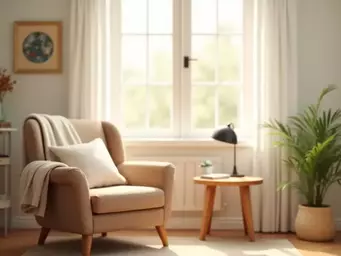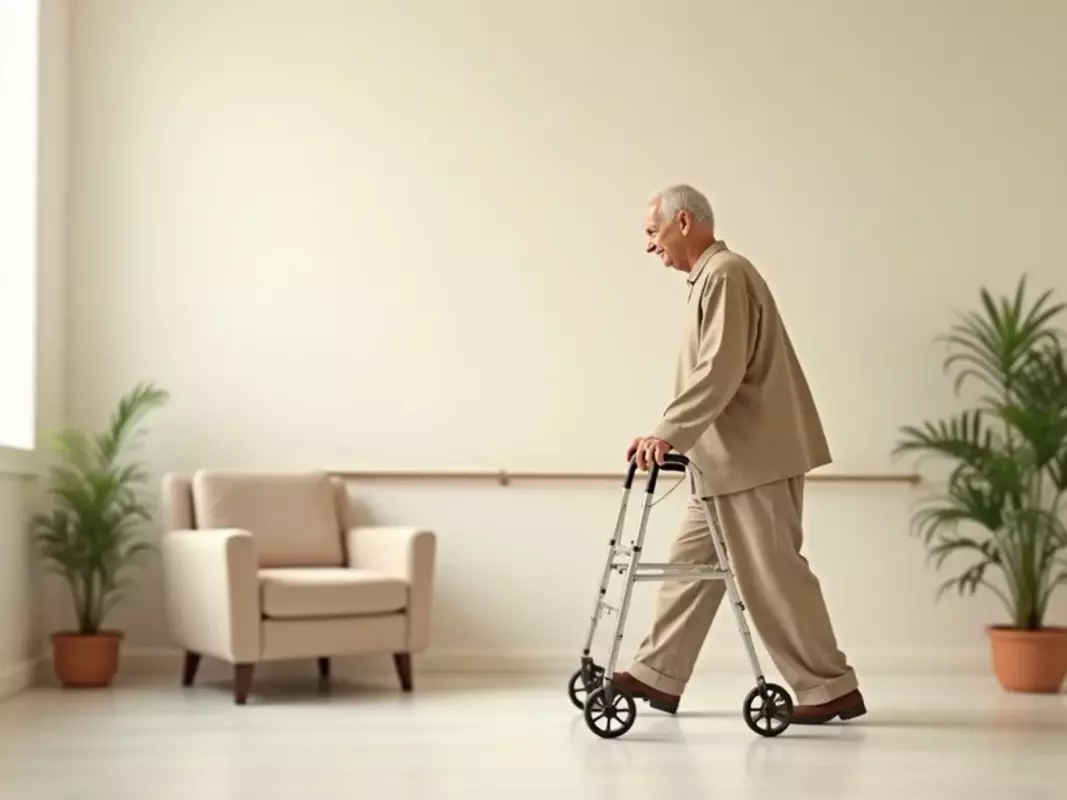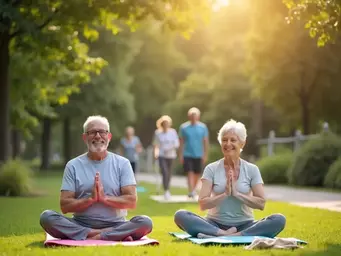Ensuring Home Safety for Seniors

Creating a safe home for seniors is not just about preventing accidents; it’s about fostering independence and enhancing quality of life. How can you ensure that your loved ones feel secure in their own spaces? Here are essential insights and strategies to help transform their living environments into safe havens.
What You Will Learn
- A safe home environment significantly boosts seniors' independence, allowing them to manage daily tasks without assistance.
- Regular safety checks can identify hidden risks like cluttered pathways and inadequate lighting, which are crucial for preventing falls.
- Engaging seniors in the home modification process leads to better acceptance and ensures their specific needs are met.
- Cost-effective DIY projects, such as installing non-slip mats and safety rails, can greatly enhance safety without a hefty price tag.
- Integrating home safety with healthcare plans can lead to improved health outcomes, as a secure environment encourages active engagement in daily life.
- Involving healthcare professionals for home safety assessments can provide tailored recommendations that cater to individual health needs.
- Regularly reassessing the home environment is crucial, especially after any significant health changes or life events.
- Utilizing resources like local community centers and occupational therapists can offer invaluable support and guidance in creating safer living spaces.
Key Benefits of a Safe Home for Seniors
Creating a safe environment for seniors not only enhances their independence but also contributes significantly to their well-being. Here are some vital benefits presented below:
Enhanced Independence
Seniors can manage daily tasks without assistance, leading to a more fulfilling life.
Improved Mental Well-Being
A secure environment reduces fear and anxiety, allowing for a more positive mindset.
Lower Healthcare Costs
Fewer accidents mean less medical attention needed, saving costs in the long run.
Encourages Social Engagement
Feeling secure encourages seniors to invite friends over and stay socially active.
Understanding the Importance of a Safe Home Environment for Seniors
Creating a safe home environment for seniors is crucial for their overall well-being. A secure space not only promotes independence but also enhances their quality of life. At Cairns Active Ageing Solutions, we believe that when seniors feel safe at home, they’re more likely to engage in activities that keep them healthy and active!
Imagine how reassuring it is for older adults to move around their homes without constant worry. A safe environment can alleviate anxiety related to falls or accidents, allowing them to focus on what truly matters—spending time with family, pursuing hobbies, and enjoying life! So, let's explore how home safety directly impacts seniors' health and happiness.
The Impact of Home Safety on Seniors' Well-being
Home safety significantly influences seniors' physical and emotional health. When they feel secure in their surroundings, they are more likely to participate in social activities and maintain their independence. Just think about it—having a home that supports their well-being gives them the confidence to invite friends over or try out new activities!
Moreover, reducing the risk of falls and accidents can lead to fewer hospital visits and a better overall health outcome. A well-thought-out home can create an environment where seniors can age in place comfortably and confidently. For additional resources and detailed insights on home safety for older adults, the National Institute on Aging provides comprehensive tips to ensure a secure living space. Here are some key benefits of a safe home:
- Enhanced independence: Seniors can manage daily tasks without assistance.
- Improved mental well-being: A secure environment reduces fear and anxiety.
- Lower healthcare costs: Fewer accidents mean less medical attention needed.
Common Risks and Hazards in Senior Living Spaces
Many homes have hidden dangers that can trip up our beloved seniors. Identifying these risks is the first step toward creating a safer living space. From loose rugs to cluttered walkways, there are several hazards to keep an eye out for. The CDC's "Check For Safety" brochure offers a practical checklist to help identify and mitigate these risks. Here are some common risks:
- Slippery floors: Wet surfaces can lead to falls.
- Cluttered pathways: Furniture or items left in walkways pose tripping hazards.
- Inadequate lighting: Poorly lit areas make it hard to see potential dangers.
By addressing these hazards proactively, we can help seniors avoid accidents and live more freely within their homes. At Cairns Active Ageing Solutions, we encourage families to walk through their loved ones' homes to identify these risks together.
Senior Safety: A Priority for Aging in Place
Aging in place is a wonderful option for many seniors, but it requires careful planning to ensure safety. Prioritizing home safety means making thoughtful adjustments to accommodate their changing needs as they grow older. Each step taken to enhance safety is a step toward preserving their independence! For more guidance on creating a safe home environment, the U.S. Consumer Product Safety Commission offers valuable information on older adult safety, including tips on preventing common household hazards.
When families work together to create a safe home, it strengthens bonds and fosters a sense of community. Here are some tips to prioritize senior safety at home:
- Regular safety checks: Review the home for potential hazards regularly.
- Involve seniors in the process: Let them express their concerns and needs.
- Consider future needs: Anticipate changes in mobility and health.
By keeping these priorities in mind, we can help seniors thrive in their own homes while ensuring they feel safe and supported. At Cairns Active Ageing Solutions, our mission is to empower seniors, making home safety a top priority!
Pro Tip
Did you know? Regular safety assessments can significantly reduce the risk of accidents in senior homes. Make it a habit to perform a thorough check every six months, involving your loved ones in the process. This not only ensures their safety but also empowers them to voice any concerns they may have about their living space!
Exploring Cost-Effective Solutions for Home Modifications
When it comes to home safety for seniors, cost can often be a concern. However, there are many budget-friendly solutions that can make a significant impact without breaking the bank. It's all about prioritizing the modifications that offer the best safety benefits while being mindful of expenses. I'd love to share some smart ideas that can help you or your loved ones create a safer living space!
One way to approach this is through DIY projects. With a little creativity and effort, you can tackle many modifications yourself. Here are a few ideas to consider:
- Install non-slip mats in high-risk areas like the bathroom and kitchen.
- Create a well-lit pathway by adding motion-sensor lights.
- Paint handrails or furniture edges with bright colors for visibility.
- Rearrange furniture to create clear walking paths.
Budget-Friendly DIY Projects for Seniors
DIY modifications are not just cost-effective; they can also be empowering! Engaging in home improvement projects can provide a sense of accomplishment and independence. As an advocate for active ageing, I encourage you to explore these budget-friendly projects:
- Safety Rails: You can easily install safety rails in the bathroom or by stairs with just a few tools.
- Decluttering: Removing unnecessary items can create a safer, more navigable environment.
- Wall-Mounted Storage: Using wall space for storage can help keep floors clear and reduce tripping risks.
These projects not only enhance safety but can be done at your own pace, making them manageable and enjoyable!
Cost-Benefit Analysis of Home Safety Enhancements
When evaluating which modifications to make, it’s crucial to consider their long-term benefits. Investing in home safety enhancements can lead to a healthier, more secure living environment. Here’s a simple breakdown of the benefits that often outweigh the costs:
- Reduces the risk of falls and injuries.
- Enhances peace of mind for seniors and their families.
- Supports independence, allowing seniors to age in place.
- May lower insurance premiums by reducing risk factors.
By prioritizing these changes, you’re not just spending money; you’re investing in a safer and more fulfilling lifestyle.
Integrating Home Safety with Healthcare Plans
Creating a safe home is just one part of the overall health picture for seniors. It’s essential to integrate home safety with healthcare plans to achieve the best health outcomes. This holistic approach ensures that all aspects of a senior's well-being are addressed. Let’s delve into how you can make this integration effective!
How a Safe Home Environment Supports Health Outcomes
A safe home can significantly impact health outcomes for seniors. When seniors feel secure, they are more likely to engage in daily activities, thus maintaining physical and mental health. Here are some ways a safe environment supports health:
- Encourages regular movement and exercise.
- Reduces anxiety related to potential falls or accidents.
- Promotes social interaction by enabling seniors to invite visitors without worry.
These factors contribute to a happier, healthier life, which is the ultimate goal for everyone, right?
Working with Healthcare Professionals on Safety Assessments
Collaborating with healthcare professionals can provide valuable insights into what modifications may be necessary. A thorough assessment can identify risks specific to the individual’s health needs. Here are some steps to take:
- Discuss any recent health changes with a doctor.
- Involve occupational therapists for expert advice on modifying living spaces.
- Request a home safety evaluation to pinpoint hazards.
By working closely with these professionals, you can ensure that your home truly supports your health and safety needs.
Medication Management Strategies for Seniors
Proper medication management is a crucial aspect of senior health. A safe home doesn’t just mean a fall-free environment but also includes organized medication practices. Here are some strategies for effective medication management:
- Use pill organizers to keep track of daily medications.
- Set reminders for medication times using alarms or smartphone apps.
- Keep medications in a clearly labeled, secure location away from children.
Implementing these strategies can help seniors adhere to their medication schedules, thereby enhancing their overall well-being.
Real-Life Case Studies of Successful Home Safety Transformations
Sometimes, seeing real-life examples can inspire action! I love sharing stories from our community that highlight successful safety transformations. These case studies not only provide practical ideas but also showcase the positive changes that can occur.
Examples of Effective Modifications
Here are a couple of inspiring examples of home modifications that have made a difference:
- A senior couple installed grab bars in their bathroom, significantly reducing their fall risk while showering.
- A retired teacher rearranged her kitchen for better accessibility, making cooking enjoyable and safe again.
These modifications not only enhance safety but also promote independence, allowing seniors to continue doing what they love!
Lessons Learned from Home Safety Improvements
From these examples, we can glean some important lessons:
- Start with the most critical areas, such as bathrooms and kitchens.
- Involve seniors in the modification process for better acceptance and engagement.
- Regularly reassess the home environment as health needs change.
These lessons will guide you to make informed decisions that foster a safer home environment!
Addressing Common Questions About Senior Home Safety
It’s natural to have questions when it comes to home safety for seniors. Understanding the best practices can help you feel more secure in your decisions. Let’s tackle some of the most common questions!
Frequently Asked Questions About Modifications
Here are some questions I often hear, along with helpful answers:
- What are the most important modifications to make? Start with grab bars, non-slip mats, and proper lighting.
- How can I afford these modifications? Look into local assistance programs or consider DIY projects.
- How often should I reassess my home’s safety? Regularly, especially after health changes or significant life events.
These answers can help clarify the path forward!
Frequently Asked Questions (FAQs)
- Q1: Why is a safe home environment crucial for seniors?
- A1: A safe home environment significantly boosts seniors' independence, enhances their quality of life, reduces anxiety related to falls, and promotes engagement in activities that keep them healthy and active.
- Q2: What are common hazards in senior living spaces?
- A2: Common hazards include slippery floors, cluttered pathways (e.g., furniture or items in walkways), and inadequate lighting, which can lead to falls and accidents. Regular checks can help identify and mitigate these risks.
- Q3: What are some budget-friendly DIY projects for home safety?
- A3: Cost-effective DIY projects include installing non-slip mats in high-risk areas, adding motion-sensor lights for better visibility, painting handrails with bright colors, and decluttering to create clear walking paths. Installing safety rails and using wall-mounted storage are also great options.
- Q4: How can home safety be integrated with healthcare plans?
- A4: Integrating home safety involves discussing health changes with a doctor, consulting occupational therapists for expert advice on home modifications, and requesting home safety evaluations. This holistic approach supports overall health outcomes by reducing risks and promoting engagement in daily activities.
- Q5: How often should I reassess a senior's home for safety?
- A5: It is recommended to perform a thorough safety check every six months. Reassessment is especially crucial after any significant health changes or life events to ensure the home environment continues to meet the senior's evolving needs.
Resources for Further Information and Assistance
There are many resources available for seniors and their caregivers. Here are some that I recommend:
- My Aged Care: Offers information on care services and funding.
- Local Community Centers: Provide classes on home safety and wellness.
- Occupational Therapists: Can conduct assessments and provide tailored suggestions.
Taking advantage of these resources can empower seniors and their families in creating safer environments.
Personal Safety Tips for Seniors Living Independently
If you or someone you love is living independently, here are some personal safety tips to keep in mind:
- Always keep a phone nearby to call for help if needed.
- Establish a routine that includes regular check-ins with family or friends.
- Stay engaged in community activities to foster social connections.
Remember, safety is about creating an environment that allows for independence while minimizing risks!
Summarizing Key Safety Strategies for Seniors
As we wrap up, let’s recap some essential home safety modifications that can make a difference:
- Install grab bars and handrails.
- Ensure proper lighting throughout the home.
- Keep pathways clear of clutter and tripping hazards.
- Consider integrating smart technology for added safety.
By taking these steps, we can create supportive environments that empower seniors to thrive.
Encouragement to Take Action for a Safer Home
The journey to a safer home starts with small steps. Don’t hesitate to reach out for support or look into resources that can assist you in your efforts. Together, we can foster a community where seniors can age independently and confidently. Every change you make is a step towards a brighter, safer future!
Recap of Key Points
Here is a quick recap of the important points discussed in the article:
- Importance of Home Safety: A safe home environment is crucial for seniors' well-being, promoting independence and enhancing quality of life.
- Common Hazards: Identify risks such as slippery floors, cluttered pathways, and inadequate lighting to prevent accidents.
- Proactive Modifications: Regular safety checks, involving seniors in discussions, and planning for future needs are vital for ongoing safety.
- Cost-Effective Solutions: Budget-friendly DIY projects like installing non-slip mats and improving lighting can significantly enhance safety without high costs.
- Healthcare Integration: Collaborate with healthcare professionals for safety assessments and medication management to improve health outcomes.
- Real-Life Transformations: Successful case studies illustrate the positive impact of safety modifications on seniors' independence and confidence.
- Resources and Support: Utilize local resources and community programs to assist with safety modifications and ongoing support.
